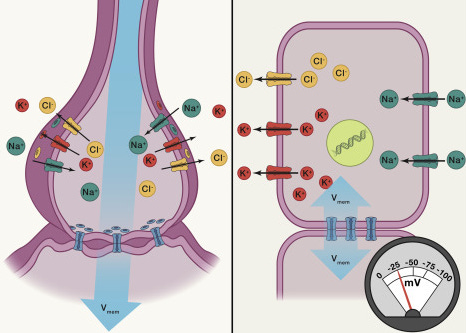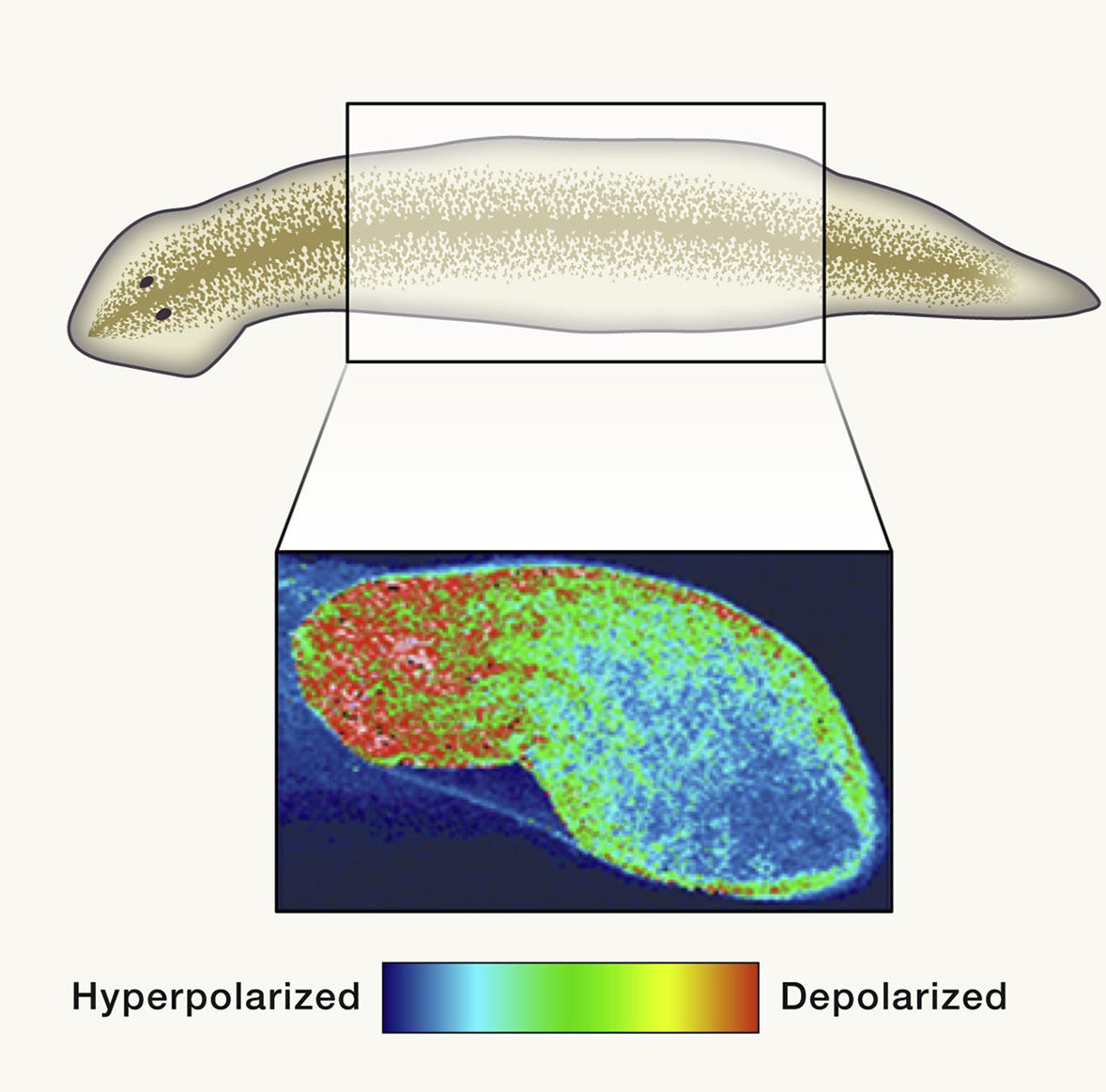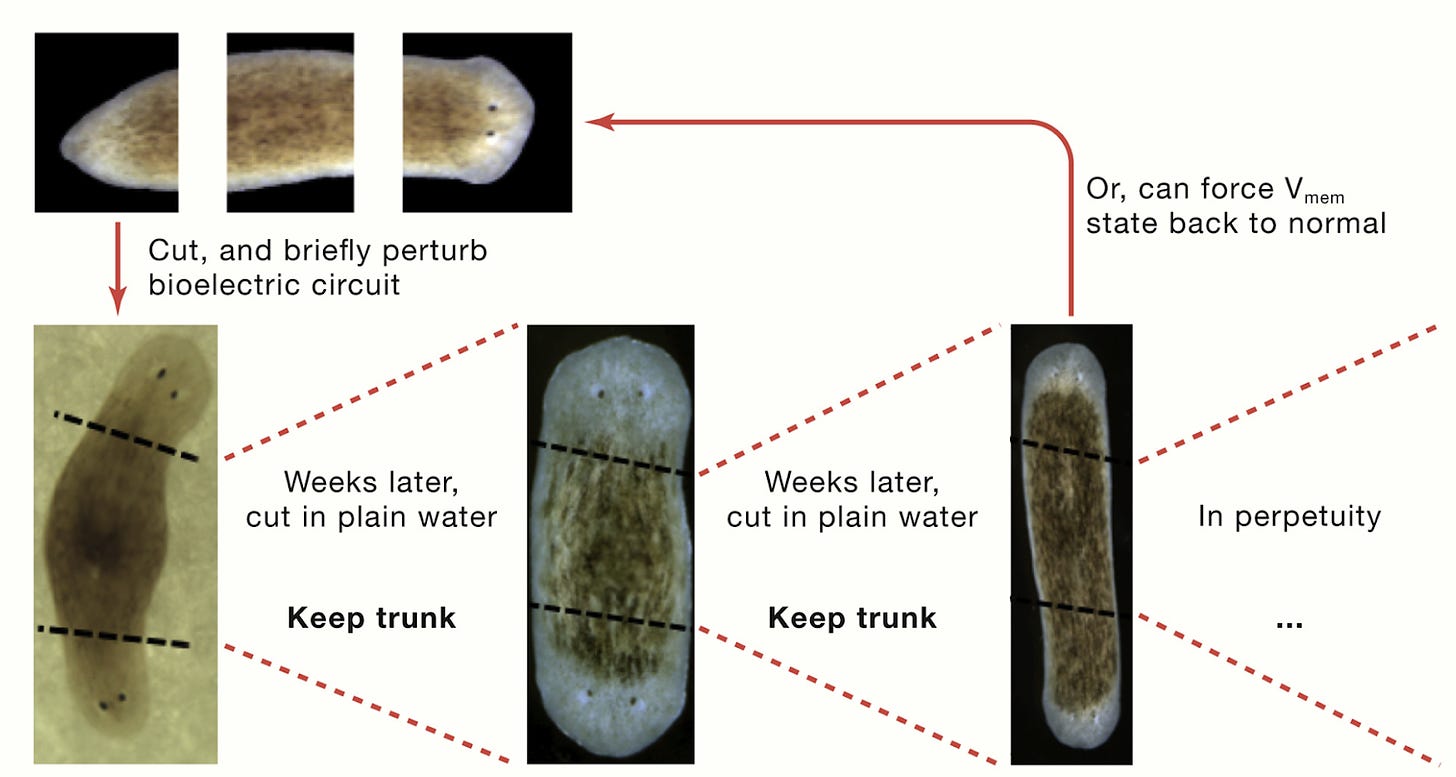Bioelectricity: the collective intelligence of cells
All cells, not just neurons, are capable of basic decision-making and memory.

Since the discovery of DNA in the 1950s, the field of biology has tended to focus on genetics. This focus has produced incredible advances in reading and editing DNA.
There’s an implicit assumption that if you just understand the genetic code (and the proteins encoded by genes), you’ll understand everything about biological systems.
Michael Levin, a biologist at Tufts University, says there’s more to the story.
It turns out that all cells, not just neurons, produce and sense electrical signals that coordinate cell behavior. This electrical signaling, also called bioelectricity, plays a key role in the process by which a cell, tissue, or organism takes (and maintains) its anatomical shape.
Breaking with standard assumptions, Levin’s research has demonstrated anatomical information is not actually encoded in the DNA. Instead, it’s stored in the bioelectric network of the organism.
Levin and his collaborators have developed tools to read and edit the anatomical information encoded in these bioelectric networks. His lab has been able to create flatworms with two heads, induce frog cells to regenerate a severed limb, and even produce novel life forms – all without modifying any genetic information.
Levin believes that understanding this bioelectric code will give scientists unprecedented control over what cells will build. This represents a new approach to medicine, directing cells in the body towards replacing tissue or organs that have been damaged by disease, trauma, cancer or aging.
Evolutionary origin of electrical networks
The electrical circuitry of the brain is often contrasted with the rest of the body. It’s seen as a privileged computational layer that is uniquely capable of decision-making and memory, among other things.
But Levin believes that the distinction is more blurry than it seems. He argues that the tissues and organs in our body might be able to remember, think, and act on some primitive level.
Long before there were neurons and brains, evolution figured out that electrical networks are exceptional for long-distance coordination, collective decision-making, and even a form of memory.
All of the components of neurons – ion channels, electrical synapses – are much older than neurons themselves.

All cells have ion channels that facilitate the flow of charged ions across the membrane, creating a difference in charge between the inside and outside of the cell that’s called the membrane potential.
Gap junctions are the equivalent of electrical synapses in neurons, enabling cells to communicate their bioelectric states to their neighbors by allowing charged ions to pass directly between them.
Both ion channels and gap junctions are sensitive to electrical conditions, opening and closing depending on the environment the cell finds itself in.
Together, these processes enable groups of cells to form bioelectric networks similar to neural networks.
Bioelectric networks can store memories
The most counterintuitive finding from Levin’s research is that bioelectric networks are capable of encoding anatomical memories – representations of large-scale anatomical structures, where various organs will go, and the different axes of the animal (front and back, head and tail).
How do we know this? Levin’s lab works with the planarian, a type of flatworm that has the incredible ability to regenerate. If you cut the planarian in half, both the head and the tail fragment will simultaneously regrow the missing part of its body, resulting in two worms.
Somehow, each part knows what’s missing and grows it back. Levin hypothesized that these memories are maintained as a pattern of membrane potentials in the cells, or the bioelectric state of the organism. The two worm fragments are building back based on the anatomical memory stored in their bioelectric network.
Levin’s lab developed a technique to visualize the electrical activity in these cells, based on tools that measure electricity in the brain. What they found is that the membrane potential of the head end is more negative (hyperpolarized) where that of the tail end is more positive (depolarized).

To test the idea that an anatomical memory actually controls where the head and tail goes, they changed the bioelectric pattern by inhibiting gap junctional communication during regeneration.
What they found was that the head fragment built another head, producing a two-headed worm. When you take these two headed worms and cut them again, they will continue to make two headed worms until the electrical pattern is reset.

Not only does the bioelectric network tell the cells what to regenerate, but the “memory” of the target anatomy can be permanently altered.
Bioelectricity as software
It’s important to note that the flatworms aren’t genetically modified. This suggests that the information that tells the planaria how many heads they’re supposed to have isn’t directly stored in the DNA, but rather the bioelectric state of the organism.
One way to understand this is to think of DNA as producing the hardware of the organism, telling each cell what proteins it’s supposed to have. The proteins are a building block for all of the organelles in the cells, including the ion channels and gap junctions.
Without the proper hardware, the cell won’t be capable of electrical activity. Once you have all the hardware in place, however, the DNA doesn’t fully determine what the shape of the organism will be.
Bioelectricity can be thought of as software that runs on the genome-defined cellular hardware. Just like software, it can be reprogrammed. While the default anatomy of a planarian might be one head and one tail, the bioelectric state can be changed to specify two heads.
This bioelectric software enables flexibility, allowing for the cellular hardware to respond to radically different experiences and environmental stimuli without having to change the hardware.
Repurposing the bioelectric system
Conventional biomedicine tends to focus on the level of molecular pathways. This is inherently challenging because it attempts to achieve complex health outcomes by micromanaging from chemistry upwards.
Instead, Levin believes that we should focus on repurposing the intelligence of the bioelectric system. Small changes in bioelectrical signaling can trigger large changes in tissue growth and form without micromanaging individual details.
Levin believes that we can reprogram bioelectric networks in humans to induce repair of disease states, revitalize failing organs, and even regenerate severed limbs. Before we get to medical applications, however, further research is needed in mammals.
Levin started Morphoceuticals to explore novel regenerative interventions, with an initial focus on repurposing FDA-approved ion channel drugs to modify bioelectric network dynamics.
To learn more about Levin’s work and the field of bioelectricity, here are a few starting points:
Friday Brainstorm Newsletter
For more, join 300+ curious people subscribed to the Friday Brainstorm newsletter. It’s one email a month with the most interesting ideas I've found related to science and health.